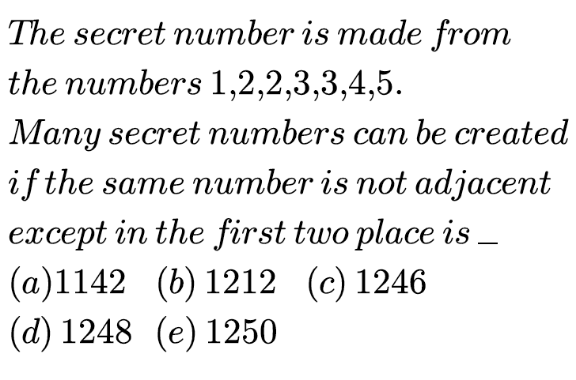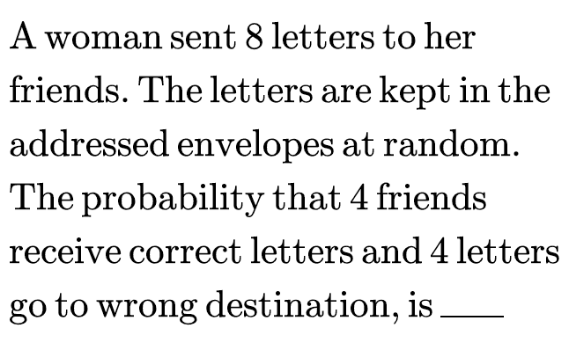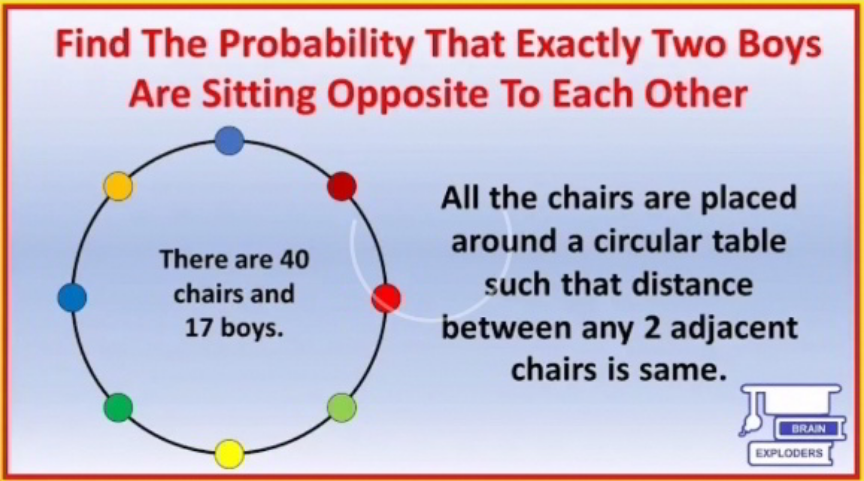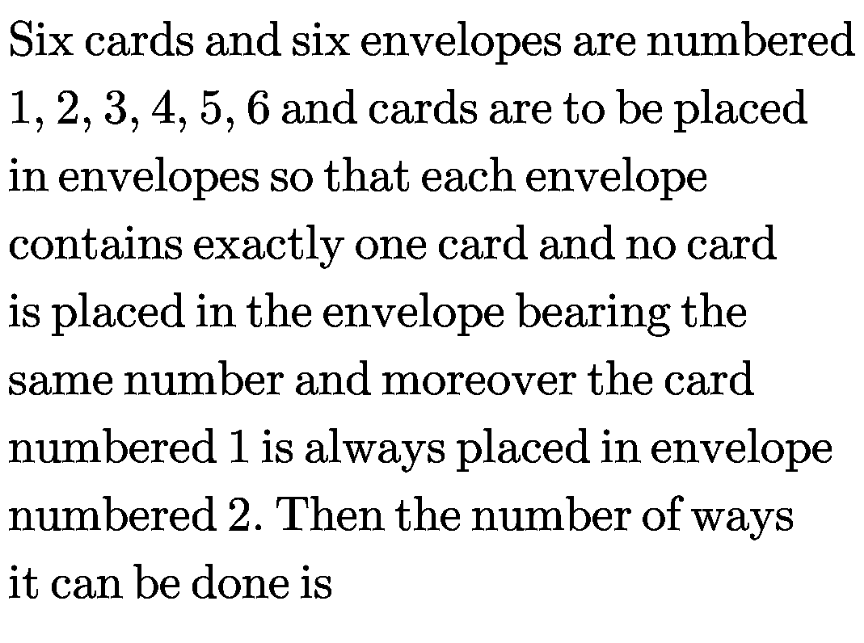
Permutation and CombinationQuestion and Answers: Page 12
Question Number 116360 Answers: 1 Comments: 0
Question Number 116177 Answers: 0 Comments: 1

Question Number 115988 Answers: 1 Comments: 2

Question Number 115902 Answers: 0 Comments: 0
Question Number 115769 Answers: 1 Comments: 0
Question Number 115408 Answers: 1 Comments: 0
Question Number 115387 Answers: 0 Comments: 6

Question Number 115230 Answers: 0 Comments: 6
Question Number 115170 Answers: 3 Comments: 0
Question Number 114797 Answers: 1 Comments: 0
Question Number 113710 Answers: 1 Comments: 2
Question Number 113486 Answers: 1 Comments: 1

Question Number 113355 Answers: 1 Comments: 1
Question Number 113353 Answers: 1 Comments: 0
Question Number 113368 Answers: 1 Comments: 0
Question Number 112934 Answers: 1 Comments: 7
Question Number 112538 Answers: 1 Comments: 0

Question Number 112195 Answers: 1 Comments: 0
Question Number 111937 Answers: 1 Comments: 0

Question Number 112533 Answers: 2 Comments: 2
Question Number 111906 Answers: 1 Comments: 0

Question Number 112531 Answers: 0 Comments: 4
Question Number 111732 Answers: 1 Comments: 0
Question Number 112812 Answers: 0 Comments: 2
Question Number 112534 Answers: 0 Comments: 3
Question Number 111393 Answers: 0 Comments: 6
